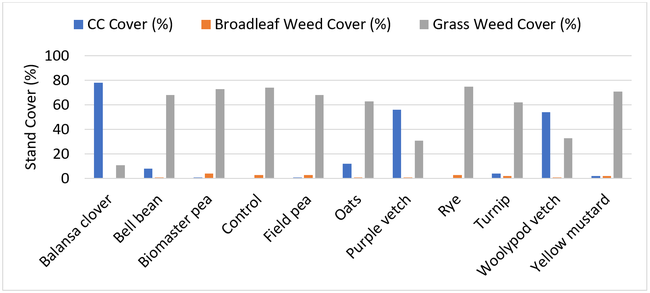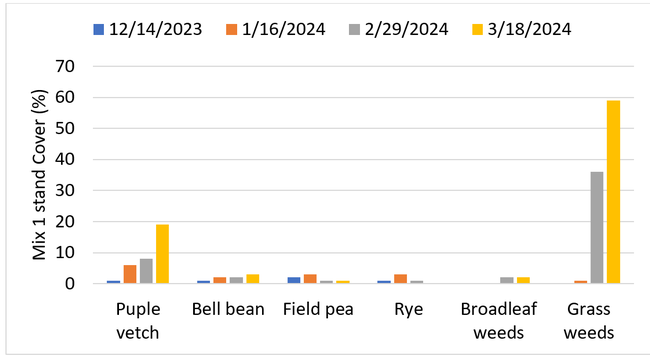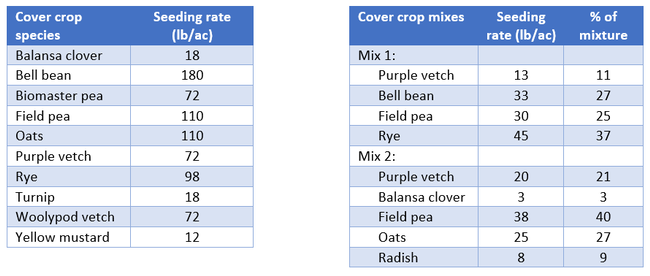With funding from the CDFA Healthy Soils Program and CA Rice Research Board, we are evaluating how well different cover crop species establish, provide soil coverage, affect soil carbon and nitrogen dynamics, and/or impact rice yield in subsequent growing seasons. Since rice may be grown over multiple seasons without rotation, cover crops may provide an opportunity to introduce plant diversity, including nitrogen-fixing legumes. Other potential benefits include increasing soil organic matter, reducing nitrogen loss in the winter, reducing nitrogen inputs during the rice season, and improving rice straw decomposition. While evaluating winter cover crops in the rice system is the primary purpose of the trial, the project has relevance for other annual systems where winter cover cropping may be employed.
The trial took place on Staten Island. We planted the cover crops on November 13th by hand-broadcasting seed over 200-ft2 plots and then gently raking it in. We planted 10 single species and two mixes (Tables 1-2). Each treatment was replicated four times, and the graphs below illustrate cover crop stands over the season (Figs. 1-4).
Table 1. Cover crop species and seeding rates. Table 2. Cover crop mixes and seeding rates.
The 2023-24 winter season started off dry, which worked well for cover crop sowing and establishment. The site received approximately 0.2” of rain within a week of planting and about 0.4” by mid-December. The brassicas emerged quickly and started covering the soil after just one month. More frequent storms started in late December, and the project field was adjacent to fields that were winter-flooded. The combination of rain plus seepage from flooded fields meant the project field stayed quite wet after the new year. The data show that the brassicas did not tolerate the wet conditions, and their stands diminished over time. The two vetches and balansa clover started off slowly but had vigorous stands by early spring, despite the wet conditions. While the bell bean did not provide extensive coverage, it survived the wet conditions and was prominent in the plots. We observed that the grass cover crops (i.e. rye, oats) suffered from bird feeding. Based on our experiences and preliminary data, we share the following ‘lessons learned':
- Timing of operations is critical. Growers should strive to plant winter cover crops as early as conditions allow (e.g. early to mid-November). Drill seeding is more effective (i.e. better stand establishment) than flying on and harrowing in seed.
- Stand establishment is impacted by conditions outside the control of the manager (i.e. weather, herbivory). If neighboring fields will be winter-flooded, having drainage ditches between fields will help cover crop growth.
The project will continue through 2025, and in addition to the Delta site, we are also trialing cover crops in Colusa and Butte counties. Please don't hesitate to reach out if you would like to learn more information about this project.




Attached Images:

